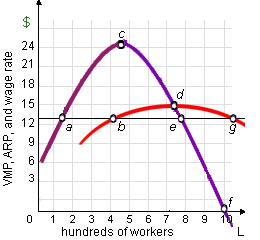Diminishing returns to labor or questions of monitoring and coordination start to overwhelm any gains by specialization and division of labor within this graph at: (1) point a. (2) point b. (3) point c. (4) point d (5) point e.

Can anybody suggest me the proper explanation for given problem regarding Economics generally?